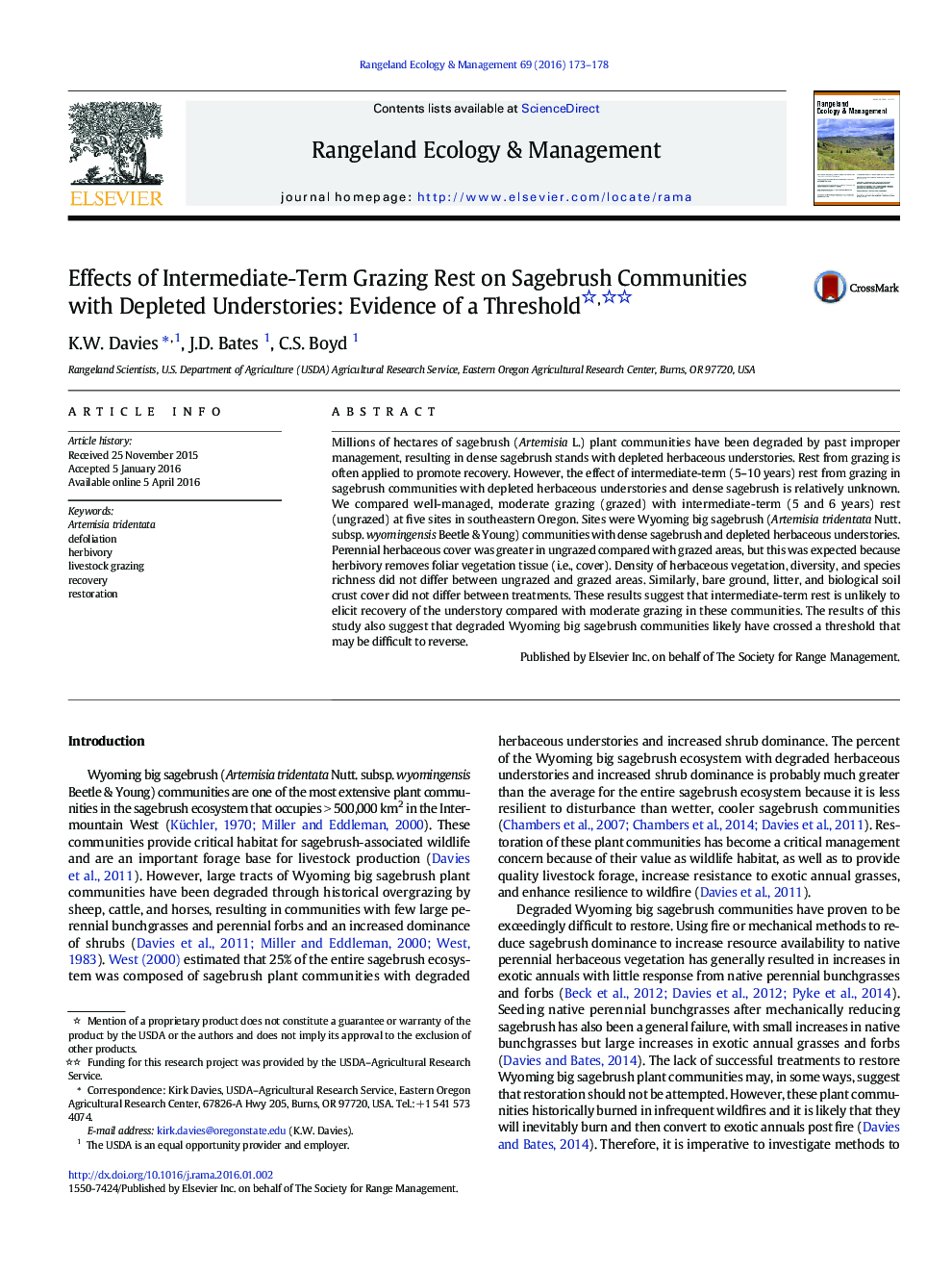| Article ID | Journal | Published Year | Pages | File Type |
|---|---|---|---|---|
| 6305767 | Rangeland Ecology & Management | 2016 | 6 Pages |
Abstract
Millions of hectares of sagebrush (Artemisia L.) plant communities have been degraded by past improper management, resulting in dense sagebrush stands with depleted herbaceous understories. Rest from grazing is often applied to promote recovery. However, the effect of intermediate-term (5-10 years) rest from grazing in sagebrush communities with depleted herbaceous understories and dense sagebrush is relatively unknown. We compared well-managed, moderate grazing (grazed) with intermediate-term (5 and 6 years) rest (ungrazed) at five sites in southeastern Oregon. Sites were Wyoming big sagebrush (Artemisia tridentata Nutt. subsp. wyomingensis Beetle & Young) communities with dense sagebrush and depleted herbaceous understories. Perennial herbaceous cover was greater in ungrazed compared with grazed areas, but this was expected because herbivory removes foliar vegetation tissue (i.e., cover). Density of herbaceous vegetation, diversity, and species richness did not differ between ungrazed and grazed areas. Similarly, bare ground, litter, and biological soil crust cover did not differ between treatments. These results suggest that intermediate-term rest is unlikely to elicit recovery of the understory compared with moderate grazing in these communities. The results of this study also suggest that degraded Wyoming big sagebrush communities likely have crossed a threshold that may be difficult to reverse.
Related Topics
Life Sciences
Agricultural and Biological Sciences
Agricultural and Biological Sciences (General)
Authors
K.W. Davies, J.D. Bates, C.S. Boyd,
